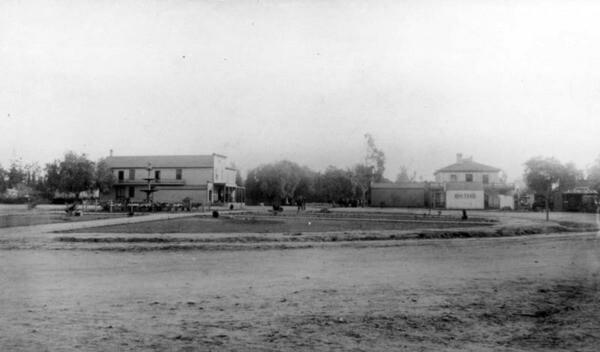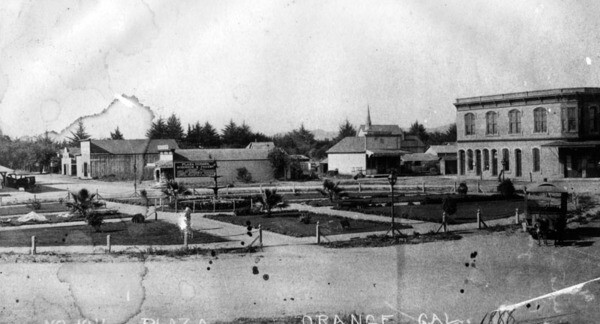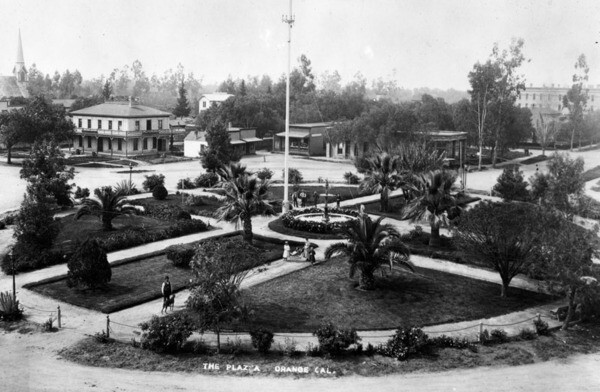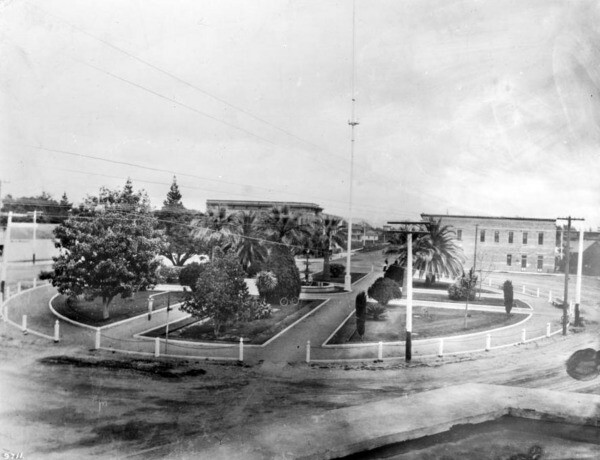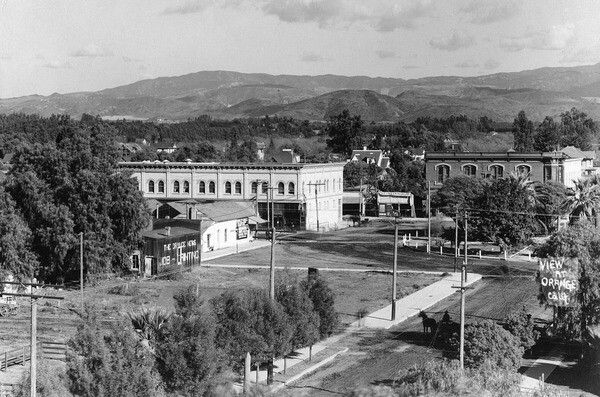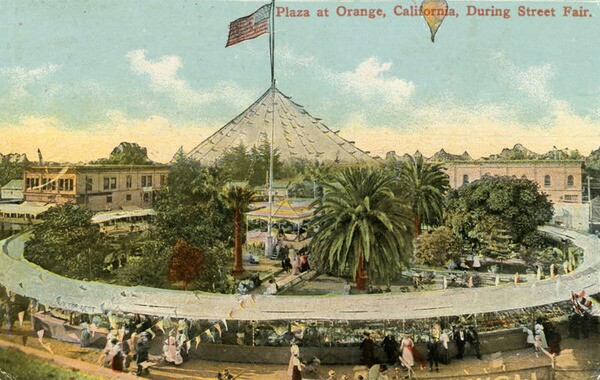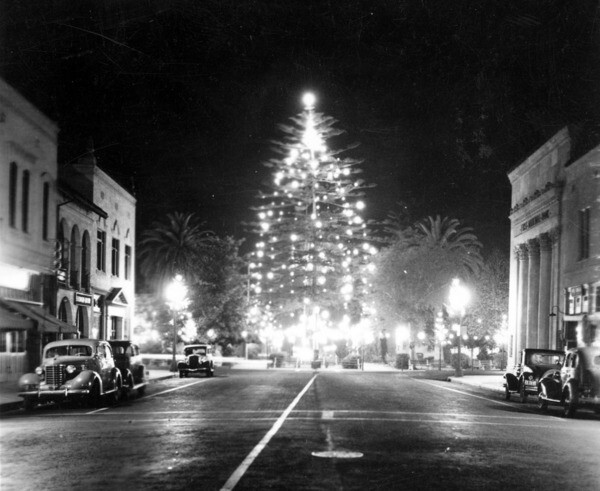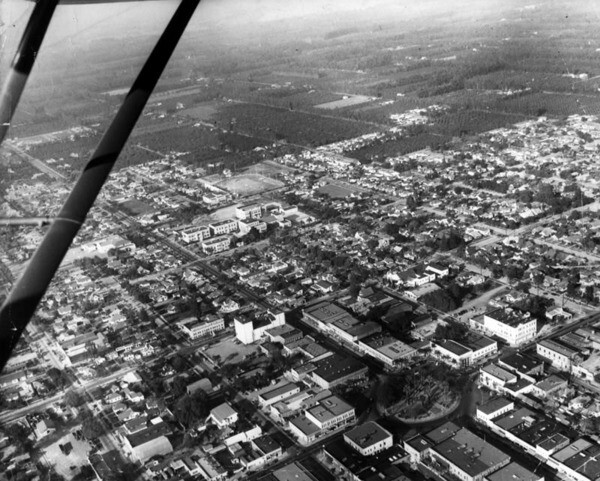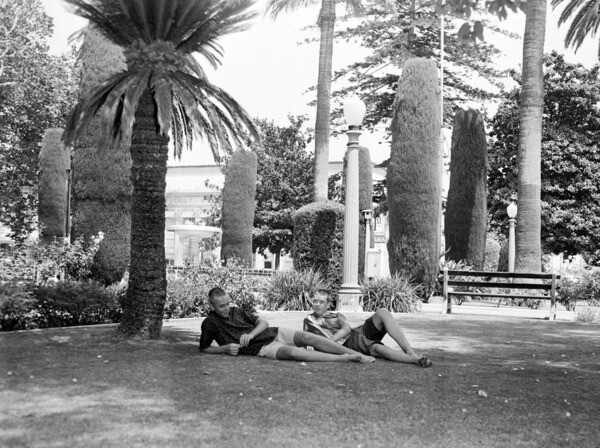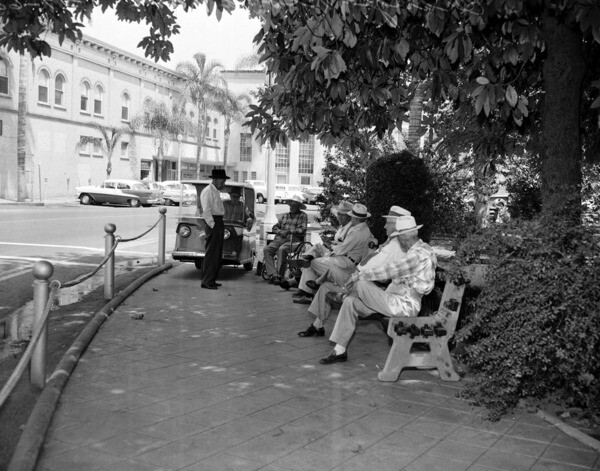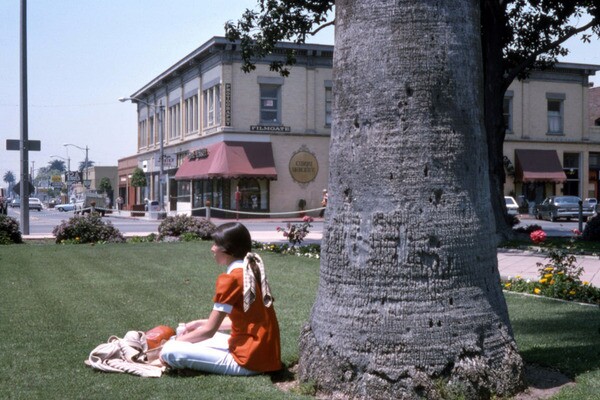How the City of Orange Circled Its Towne Square

Circle or square? There couldn't be a more obvious distinction between geometric shapes, but that hasn't prevented an endless debate over what to call the historic landscaped park at the center of the City of Orange. Casual acquaintances know it as the Orange Circle – a reference to the park's circular shape (it's technically an ellipse) and to the roundabout that surrounds it. Good friends of the park, however, call it Orange Plaza Square – a reference to the rectangular space enclosure created by the surrounding buildings. That's also the name found in official documents, and a usage that's become the marker of a true local.
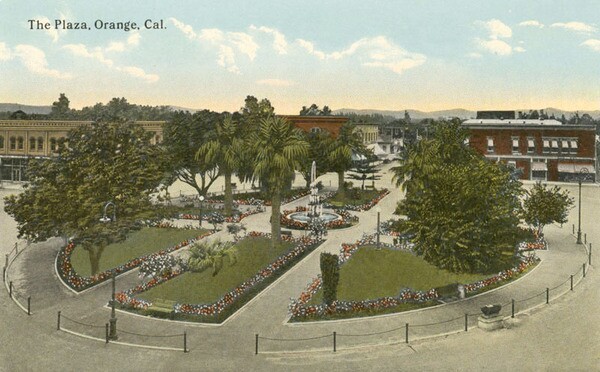
The park has been the physical heart of the city since 1871, when William T. Glassell platted the town of Richland (renamed Orange two years later) around a rectangular plot of public land.
Whatever its name, the park has been the physical heart of the city since 1871, when William T. Glassell platted the town of Richland (renamed Orange two years later) around a rectangular plot of public land. In its early years, the plaza was little more than an undistinguished open square, 292 feet wide by 330 feet long. The town's two main streets intersected in the dusty void, and at the center water piped in from a local well leaked from a trough. Weeds grew everywhere. A local merchant improved the situation by planting a few dozen pepper trees in the early 1880s, but it wasn't until 1886 that Orange set about beautifying its central plaza.
Using funds raised privately through bake sales, bazaars, and stage productions, residents placed a bronze fountain at the center of the square. Around the fountain went a formal park navigated by two pairs of parallel walks and planted with palms and magnolias. (The original pepper trees were removed with some controversy.) Encircling the entire part was a dusty drive that linked up with the town's two main streets, Chapman and Glassell.
Orange has always resisted calls to replace the slow-moving roundabout with a more conventional intersection.
That basic plan survives today, even though the forces of traffic modernization have long threatened the circular park at the square's center. In 1956 the city reduced the number of crosswalks through the traffic circle from four to two. In the late '60s it nearly banned pedestrians from the park altogether. Yet Orange has always resisted calls to replace the slow-moving roundabout with a more conventional intersection. And so the Orange Plaza Square – home to the city's Christmas tree, the center of its annual street fairs, and now the heart of Old Towne Orange – remains a circle.
To learn more about the City of Orange and its historic circular square, see "A Brief History of Orange, California: The Plaza City" (2011, The History Press) by former Orange County Archivist Phil Brigandi. The Orange Public Library Local History Collection is also a treasure trove of historical resources, including photographs – only a small sample of which appear here.

